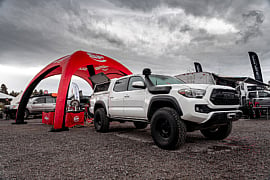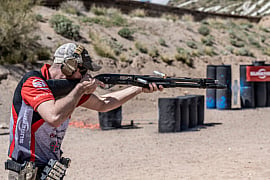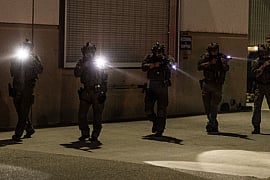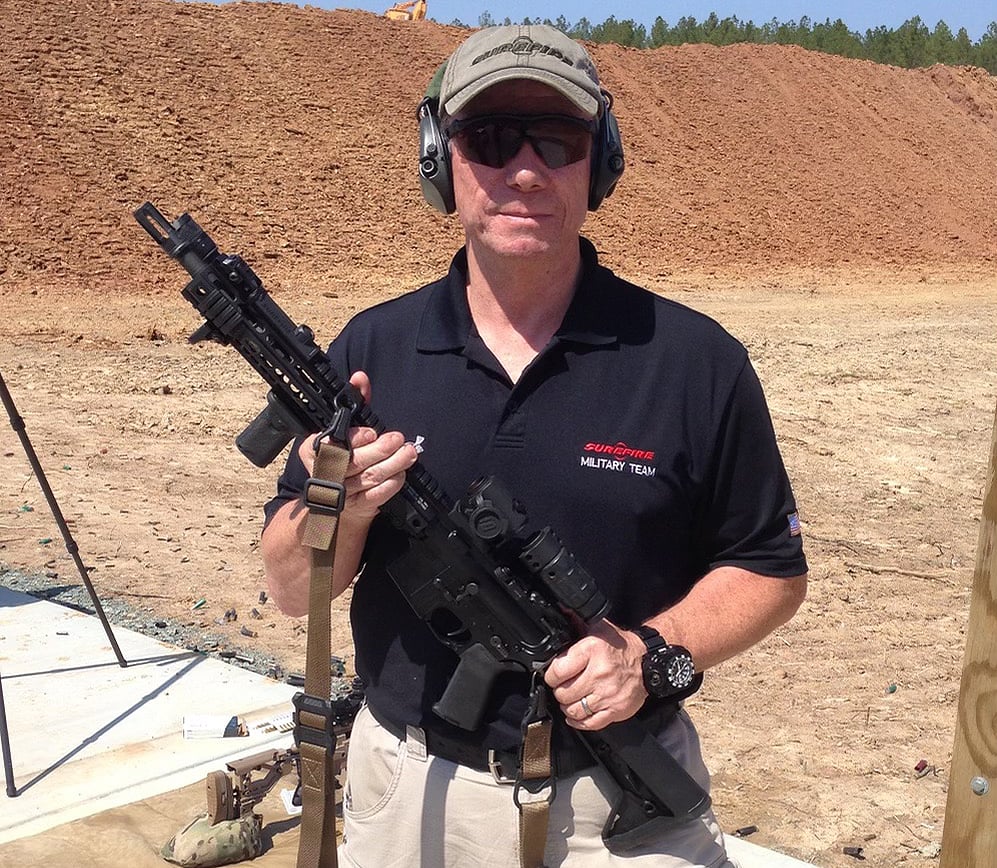
As SureFire’s VP of Military and Government Sales, Jamie Wiedeman is responsible for a lot of customers. He calls himself a Blue-Collar VP, still pounding the pavement at the ground level, but is responsible for much more than that. Military sales are only part of the job. There are future programs, military dealers, product development, industry partnerships, and flat-out customer service for the military units that need it. With the vast product line at SureFire, the military team covers a variety of projects from tactical illumination to suppressors and EarPro.
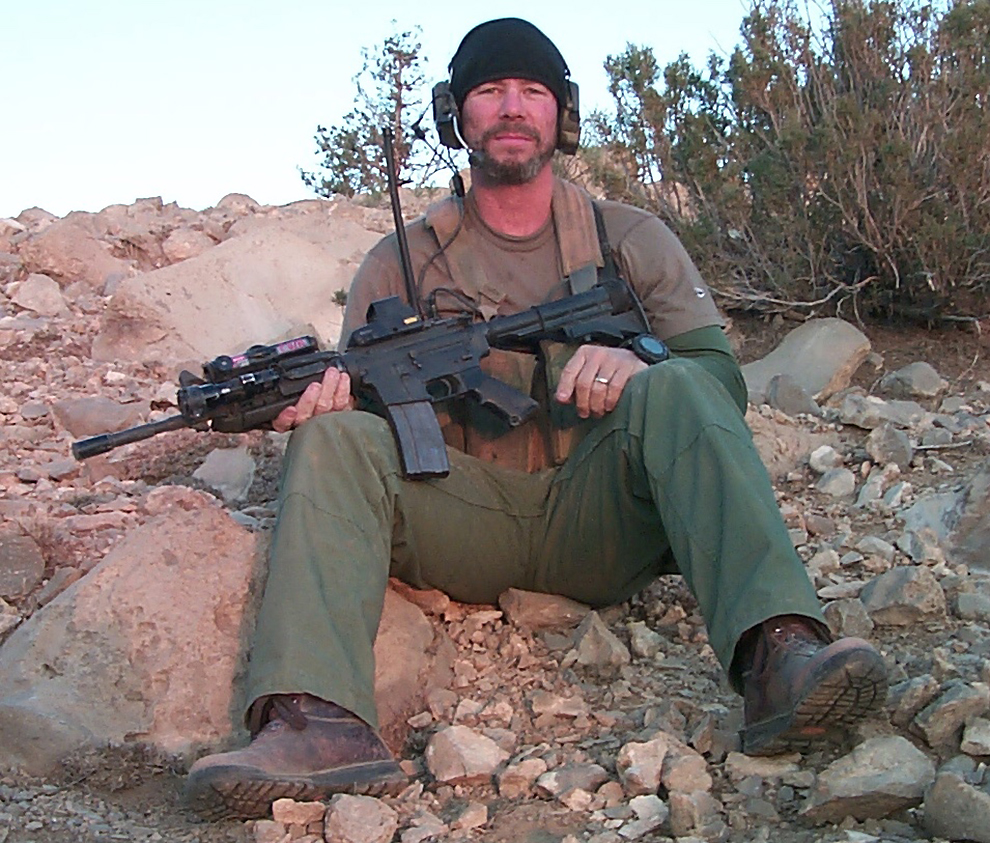
As a retired soldier with a career in U.S. Army Special Operations, Jamie understands the products from an end-user perspective and relates to what the current customers want. Working with SureFire keeps him involved with the military in an industry support role connected to the frontline.
Can you give us an overview of your military background?
I joined the Army in 1982 as unassigned Infantry Airborne. I served in the 82nd Airborne, 1st and 3rd Ranger Battalions, then was assigned to U.S. Army Special Operations Command (USASOC) until retirement.
How many years did you serve?
I did 20 years of active duty. I retired as a Master Sergeant.
It takes a special individual to work at the highest levels in the military.
I seriously don’t think I am special. So many are better than me at most things. I was good at breaching and mechanically inclined. I was a HALO Jumpmaster, but jumping wasn’t something I did on the weekends. I never won a sniper competition. I was slow on the obstacle course compared to the masters of it.
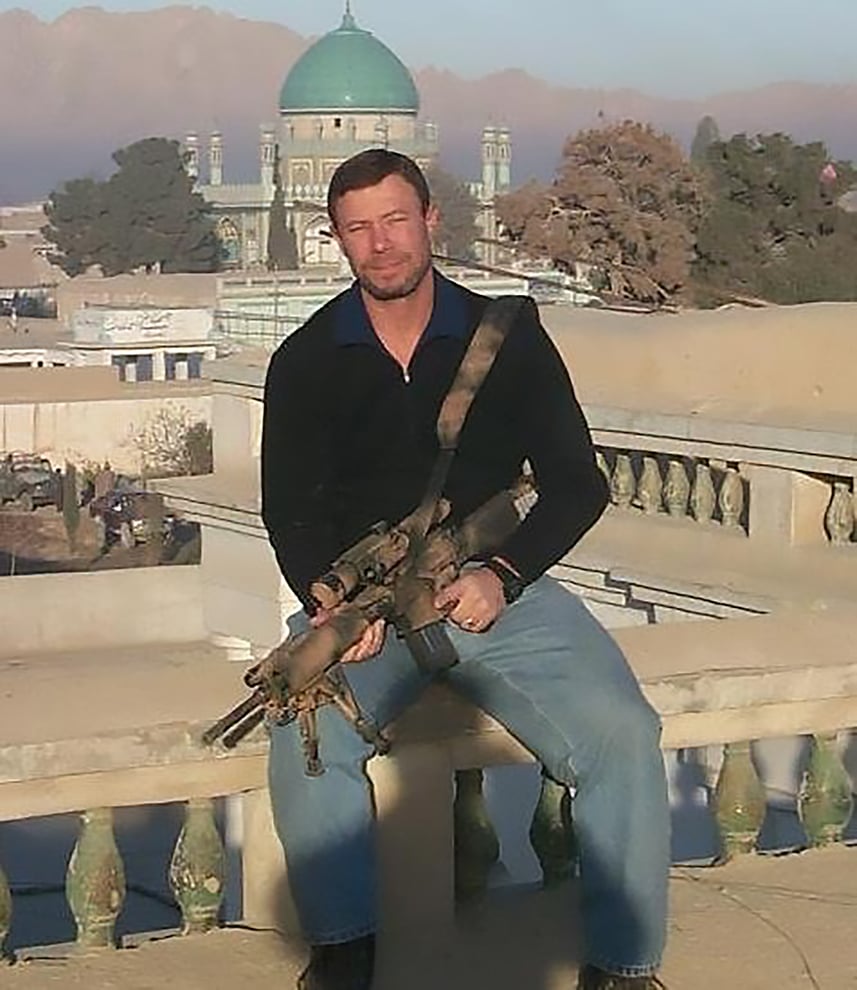
I did everything I was supposed to do, showed up every day, and always gave 100%, but some guys stayed 25+ years and were super-operators. I was efficient and preferred to do things the smart way over the hard way. It’s not glamorous, it’s hard work every day. A Sergeant Major once said, “You don’t have to like it, you just have to do it.”
When and how did you come to be employed at SureFire?
At the Infantry Conference held on Ft. Benning, Georgia, in 2004, I met Barry Dueck, currently the VP of Weapons and Suppressors at SureFire. He showed me a SureFire suppressor and told me about cutting-edge advantages it could give our warfighters. It was a game-changer. Barry described the lack of impact shift from unsuppressed to suppressed and that the suppressors always repeat zero. Plus, saving half a pound of weight on the end of the muzzle was a big deal. The suppressor I was issued was heavy, and they changed your point of impact and were not repeatable. Because of those reasons, we really didn’t use suppressors very much back then. We took them to Afghanistan, and some people used them there, but I never used one past 25 meters.
You’re big on preparation. Did you learn that in the military?
I think we all learn better ways to be organized, but I guess I was always pretty anal about being prepared. I’ve thought about that before: Did the military make me like that? Not completely, but in the military, you are always preparing for something. I feel the Special Operations environment is a place with no limits on how involved you want to be. There is always more to learn, more training to receive….and you can never do it all. I feel I was always mechanically inclined and organized, and the military needs people like that. In the military, I was big on equipment maintenance, weapon maintenance, vehicle maintenance, etc. Everyone knew that about me. You need to make sure that everything runs the way it is supposed to. I like equipment to perform perfectly, so maintenance and preparation are critical to success. It sure is less stress than not being ready. In the civilian world being careless means, you miss a flight, blame it on TSA, but you don’t die. I am big on preparation just to keep things easier for me, not because I’m a perfectionist. To me, it’s just easier to have your act together than to show up last minute, trying to figure it out. Save that for the plane crash, man. Don’t live your life that way every day. I couldn’t do that. It’s easier to stay caught up than it is to get behind and catch up. It’s just a personal thing, the work ethic. There is an obligation to your team, your unit, and yourself to be prepared.
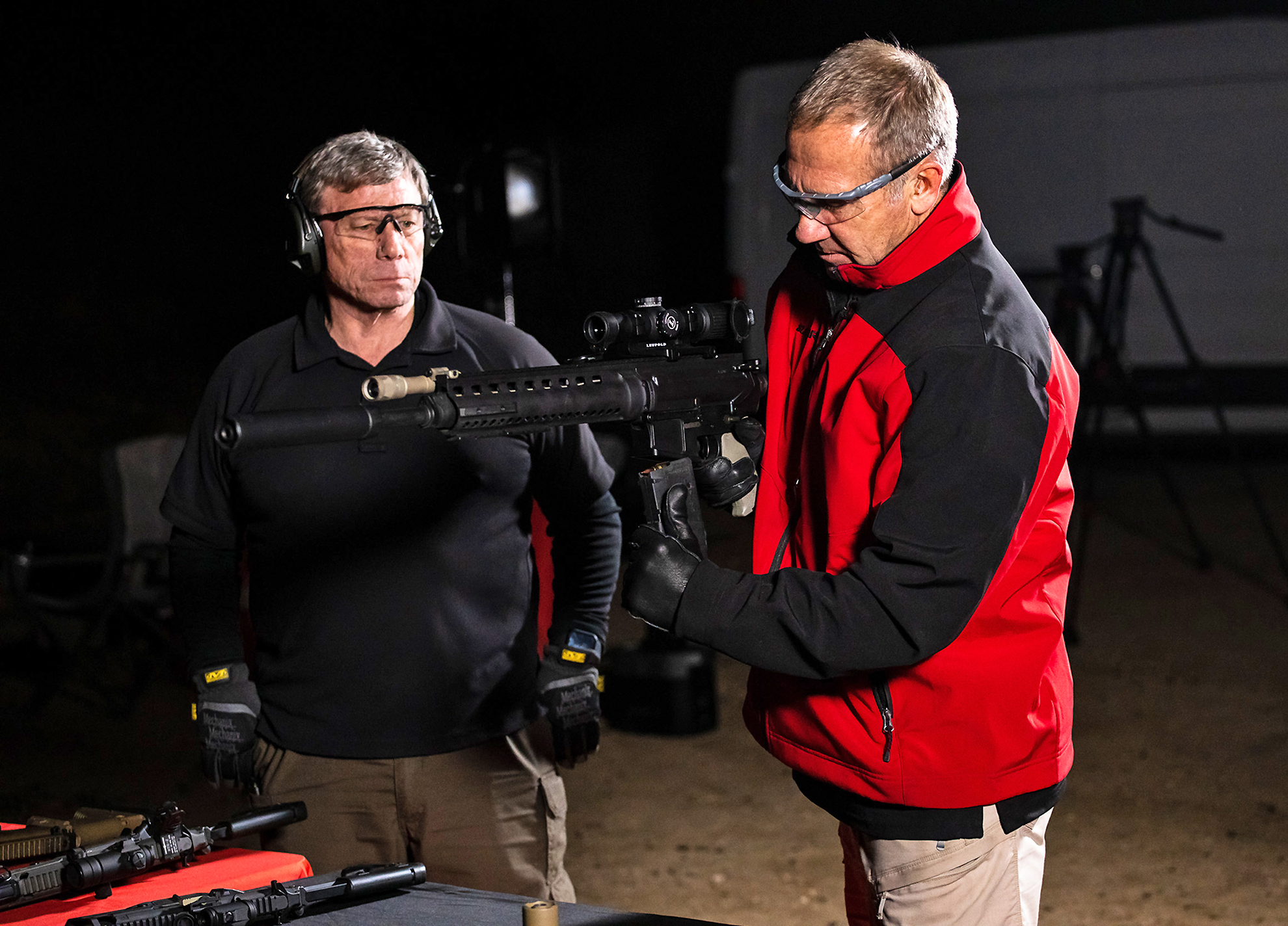
Do you think machine guns should be suppressed when used by SOF?
One hundred percent. It’s very easy to identify a support-by-fire machine gun position at night due to the flash signature. A suppressor will greatly increase the survivability and lethality of machine gunners in the military. A suppressor on a machine gun also reduces the visible dust signature during the day. On a vehicle, the machine gun may be mounted directly over the driver and passenger’s heads, so the suppressor greatly increases the ability to communicate during engagements.
Did you use any SureFire products during your military career?
Yes. We had the pistol lights for the 1911s, which I think were made for us back in the day. I think some tweaks came about from that design from military feedback. We used the Executive E2E for handheld options.
Early on the 6Ps were mounted on our rifles with a Weaver rail and a 1-inch scope ring. It is old school but worked well back then. I ran a pressure switch secured to the handguard with electrical tape. It was set up at the 9 o’clock position on my hand guard. It was easy to hit with either your forefingers on one hand, or your thumb on the other, so it could be activated left- or right-hand shooting. Not that I practiced shooting off-hand a lot, but If I had to, my rifle was set up ambidextrous. At that time, shooting off-hand or weak-hand was practiced more in the event of an injury.
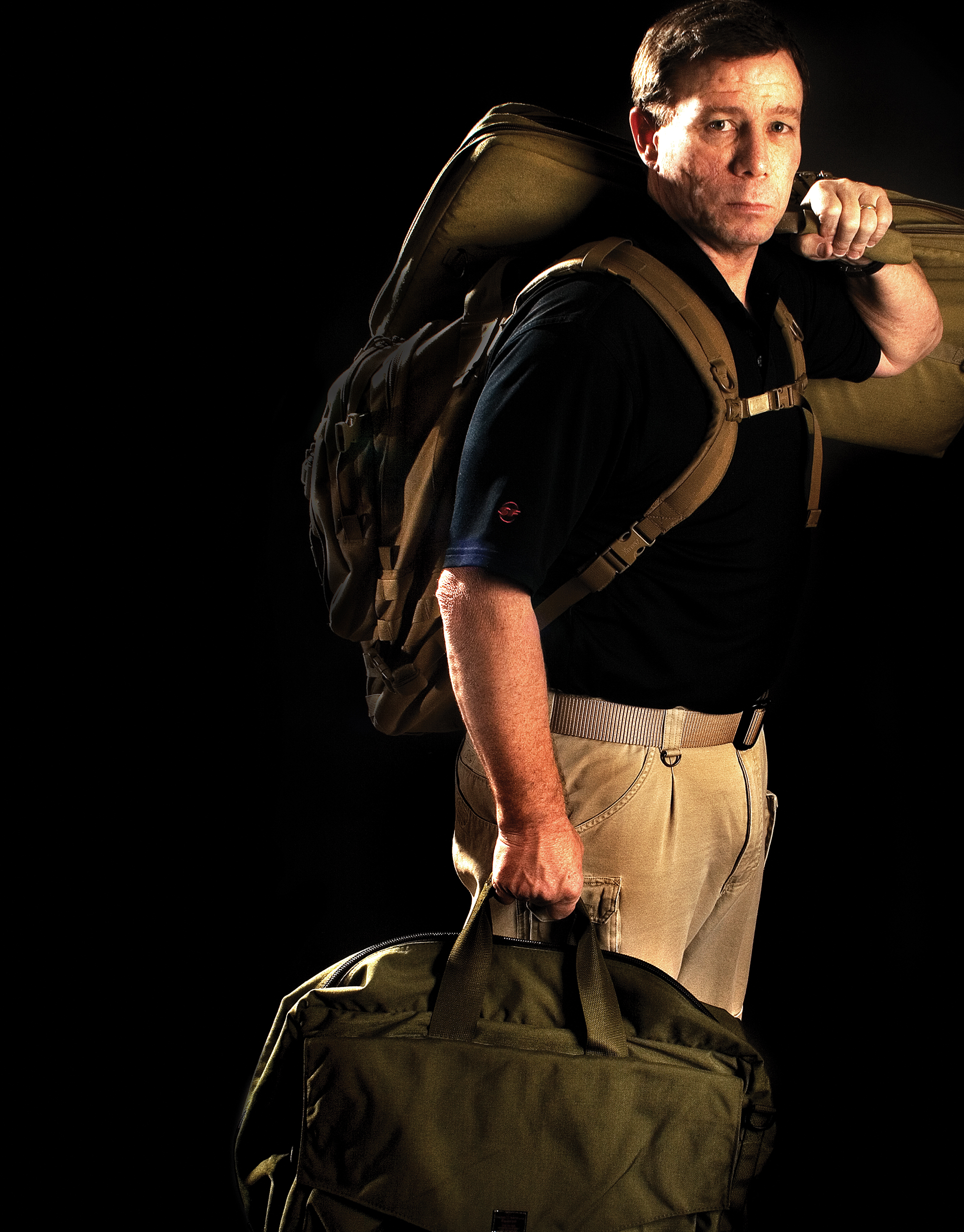
What kind of rifle was it?
We had the CAR-15s initially, and then we got the M4s. We had a Knight’s Armament Picatinny rail handguard that worked well at the time; my IR laser always maintained zero through rough handling, but the rail space was less than handguards today. I never had a problem with my M4. It was accurate and reliable.
What optic did you use?
Aimpoint mostly. We were issued EOTECH toward the end of my career. We went to EOTECH for a while. It seemed like guys liked it because it had a bigger sight window. Many said the EOTECH was faster to use. I didn’t like the circle dot reticle, I preferred just a single red dot. I haven’t had any problems with the Aimpoints. I ran a couple of them into the ground, but shoot, man, you’re talking like eight years of hard use. The first one I ever had, it lasted forever. I think I was one of the last to get rid of a 20 mm Aimpoint, just because it still worked.
Did you ever have any conversations about light when you were in? Did you think you had enough light, or was light ever a topic?
No. I probably could’ve been more into gear, but I don’t think there was a whole lot of gear to be into back then. It seems like the tactical equipment industry exploded about the time I was retiring. We used the same weapon illumination for about 20 years, then the LED technology improved. We thought the original 6P incandescent flashlights were impressive back in the day, but 1,000 lumens today compared to 65 lumens back then is almost night and day.
What are some of the biggest technological changes you’ve seen from when you were in to where we are now?
I’d say one of the big ones is the infrared LED instead of the IR filter. I mean, the IR filter basically blocked everything but the infrared spectrum away. That’s why those filters get hot. You could only see a few feet or so, only the immediate area with them. Now with the infrared-specific LEDs and the night vision operators have today, the IR illumination is far more useful. That’s huge because you don’t need a filter. You can select IR by rotating the head on our V-Series lights. Maybe one of the most innovative products we have is the V-Series bezels, making it possible to select white light or IR rapidly. Also, the output on LEDs has increased rapidly and the efficiency has improved making brighter flashlights with longer battery run times possible.
Then body armor, uniforms, the helmets are better now. I’m sure most new equipment is lighter, but it still all adds up. Now soldiers are running onboard computers and cameras. I think I squeaked out right before the camera era. Being an operator is more high-tech now.
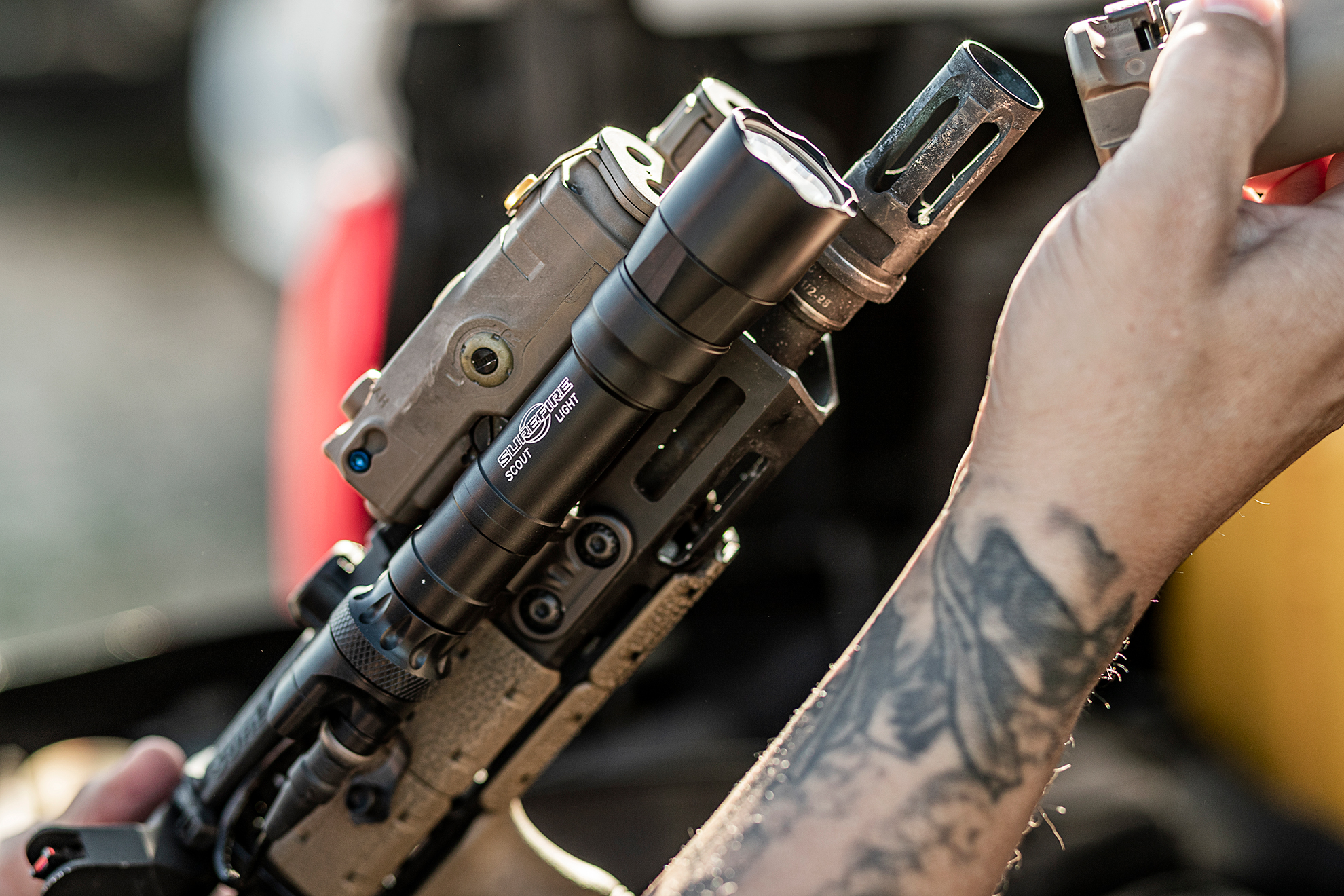 You mentioned the handguards and how many accessories the guys are stuffing onto the rails. The Scout Light Pros seem to help them out because they are adjustable.
You mentioned the handguards and how many accessories the guys are stuffing onto the rails. The Scout Light Pros seem to help them out because they are adjustable.
Yeah, the timing is good for the new Scout Pro because now SOCOM is fielding the URGI upper receivers with M-LOK slots and a Picatinny top rail. Even if the end-user wants to use Picatinny, the Scout Pro comes with both mounts. As far as our sales go, if the customer doesn’t know about the new Scout Pro, we make sure to tell them, and most of the time the customer will purchase the Scout Pro over the fixed-mount legacy Scout Lights.
How important do you think SureFire’s American manufacturing is?
I think for a lot of our customers, that matters. It’s important. We always have been able to control the quality because we do it all right here at SureFire. That’s what SureFire has been—the lights that always work. The Scout Lights that we sell to the military see some hard use, some units have been using them over 10-plus years, 15 even. The same lights! Right next to the muzzle the whole time, and they still hold up. Some customers shoot a lot, and we don’t see any problems from Scout Lights. I can’t say we’ve never seen any problems ever, but so few it’s rare.
Speaking of suppressors, the same thing is true with how long they last. They’ve been incredibly durable under super hard use.
We don’t talk about numbers of suppressors fielded by SOCOM, but we have had very few issues. Most issues we have seen are due to lack of training. We do our best to provide technical training to all our customers, but it’s hard to be everywhere when so many are using SureFire suppressors. Soldiers rotate out, so it’s a continuous process to keep the end-users supported.
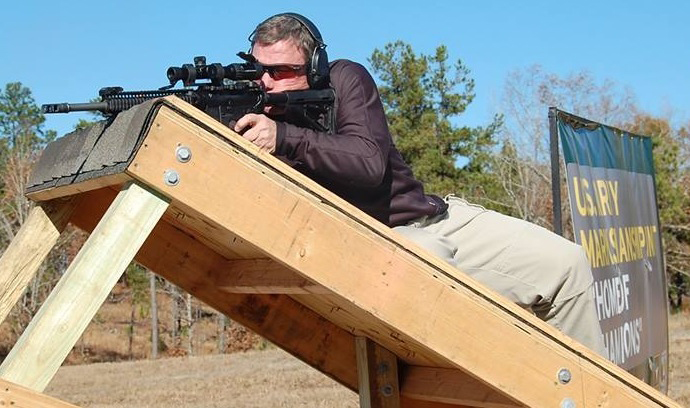 What’s the biggest challenge when working with the military? Is it strictly cost? Is it educating them about the products?
What’s the biggest challenge when working with the military? Is it strictly cost? Is it educating them about the products?
On the weapon light side, there is no current program of record to equip every soldier with an M4. Many units outside of Special Operations Command must purchase weapon lights with small unit funds, so it’s a matter of priorities for the commander. It’s also an education process for us to demonstrate SureFire capabilities to them through customer interaction. We do see a lot of units purchasing weapon-mounted illumination for handguns and carbines, across all branches of the military, suppressors too. So, if we do our part, educate the customer, funding is still a choke point. Often the work we do takes months or years before fielding.
Talk about the importance of the white light, i.e., on a pistol or rifle. The market seems to be heading back toward high candela.
As LED’s became brighter, SureFire engineers spread the beam out wider yet still maintained a center hot spot for penetrating distance. Today we call this our Hybrid beam pattern. Our X200A pistol lights were only 60 lumens in 2003, then the X200B came out with 100 lumens and a revised beam pattern that offered more surround. People liked the X200B more. The good news is we have every flavor of beam pattern now for our customers. We have the MaxVision (full flood, really a wall of light), the Hybrid beam pattern (hot center spot with good surrounding spill), and the Turbo (narrow far-reaching beam with max candela). Most of our military end users we have surveyed prefer the Hybrid beam. The combination of center hot spot for going deep, with wide peripheral spill for situational awareness is hard to beat. This is what you get with our flagship Scout Lights and X300U beam patterns.
What’s your personal home defense setup like?
If you get past the guard dogs, we have Glock 17s and 19s with X300U-As and DG switches. My wife and I are familiar with Glocks, so we have a lot of them everywhere. And then AR15s with red dot sights and Scout Pros. I have some other guns set up with IR lasers, SureFire V-Series IR bezels, and night vision on helmets also. To keep the carbines light, we just run red dot sights. For the rattlesnakes, Remington 870s with SureFire dedicated WeaponLight forends.
What keeps you occupied when you aren’t working? We’ve heard you like to drive fast machinery.
A lot of home projects lately. Over the past year, we have been busy building ATV and dirt bike trails. We also put in a rifle and pistol range.
When I was a kid I raced dirt bikes, BMX, and go-karts, anything I could afford that would go fast. I grew up in New Mexico, and I kind of miss that for the snow skiing and open desert. I had a ’77 Dodge Power Wagon 4X4 with a 440 Magnum engine, and an ‘82 Z-28 Camaro on nitrous oxide. I had several fast street bikes that were cheap speed, Yamaha RD350 and RD400 two-stroke bikes that were quick in town, a Kawasaki Ninja 1000, GPZ 1100, and others. I had several different dirt bikes also. Between my buddies and I, we had all sorts of bikes to share. We would chip in and buy motorcycles to share, so we got to try out a lot of bikes. We did a lot of off-road driving in Jeeps and trucks. Now I have a Honda 250 dirt bike and a 2019 Bullitt Mustang that will likely lead to me losing my driver’s license. I hope to get back into mountain bike racing if my shoulder can take it.
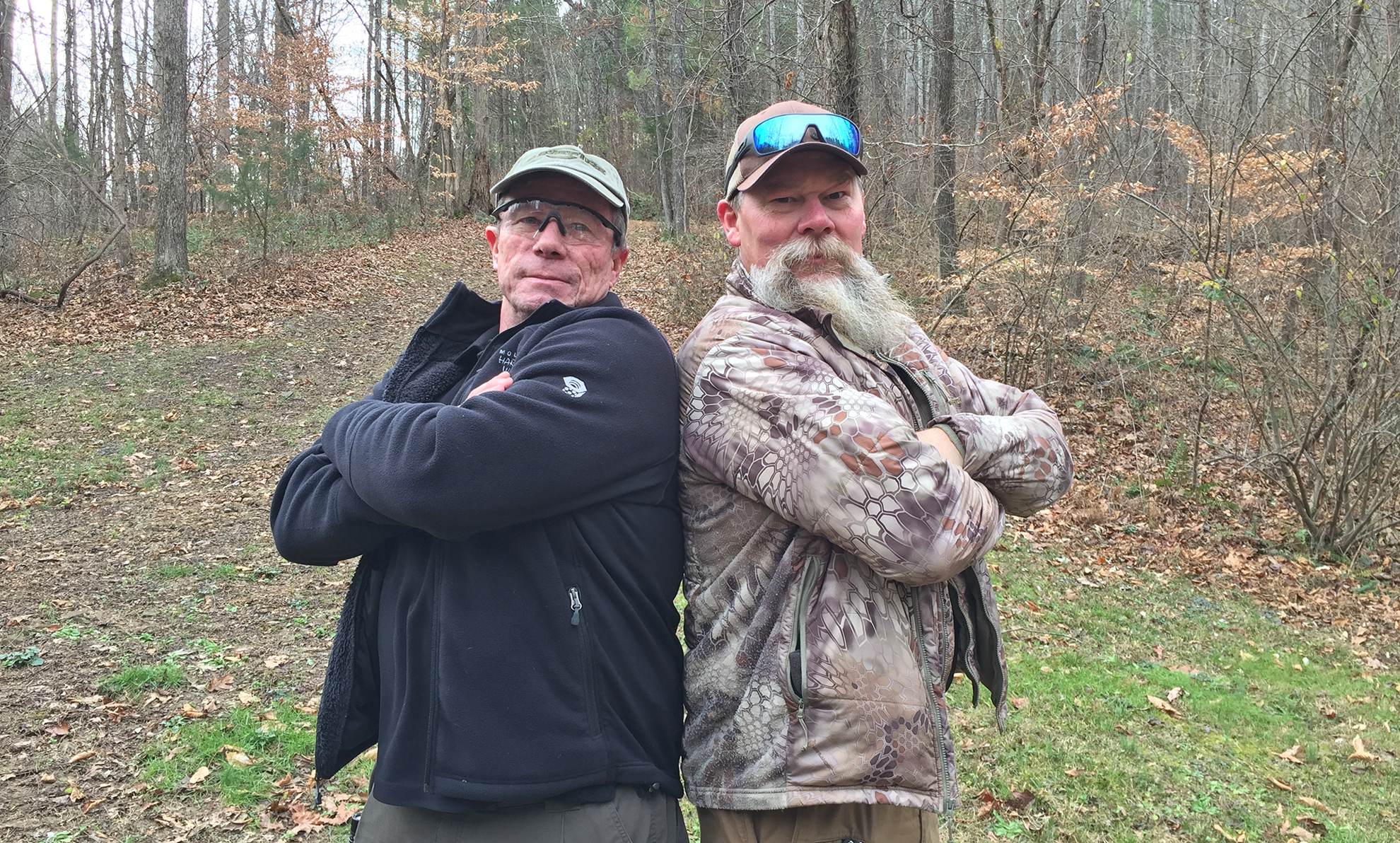
What is the most gratifying part of the job for you?
The most gratifying part is helping the military and government agencies. I have always been surprised how everyone has been really accepting of our advice and assistance. I can’t think of an example, no matter where it was, that end-users weren’t open to our advice. It’s a challenge to keep up and requires a team effort. Sometimes we receive feedback on how our equipment performed and how it made a difference in combat—that’s always rewarding to hear. The last thing many terrorists see is a SureFire light in their eyes, engaged by ammo fired through a SureFire suppressor. It’s wild to think of how many places SureFire has been, how many missions our products have been a part of. That’s a big deal.
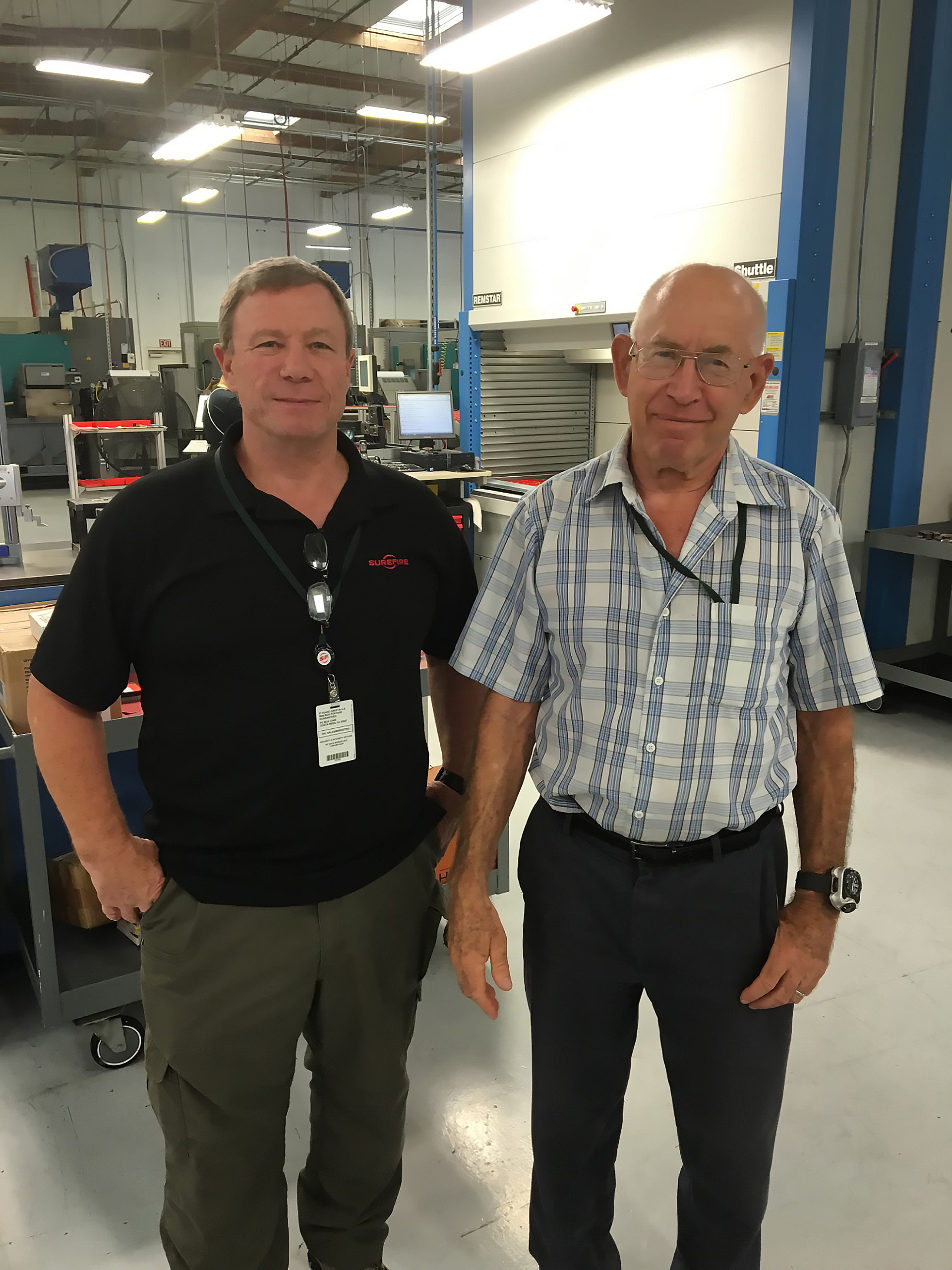
Your credibility can’t hurt either.
An operational background helps, but we learn from the customers too. My credibility now depends on my performance at SureFire, so we try hard to take care of the customers. Customer service is what I do now, but I can’t take full credit without mentioning Alan Elam, Director of Military Sales. Alan is smarter than me, and I rely on him every day. If you shoot more, handle weapons more, and operate more, you’re going to learn and identify things that you won’t if you’re just selling a product. I rely a lot on other people’s input if they’re training hard, shooting a lot, or conducting a specific test. We keep an open mind here because techniques change and better ideas come along.
SureFire has been around since 1979. When you think about SureFire, what comes to mind?
SureFire was helping those with a tactical mission before I knew about them. SureFire is an example of what comes from a visionary like John Matthews who has the talent and passion to build on his interests. John likes to provide solutions to problems and is focused daily working on projects that will become future SureFire products.
I am extremely fortunate to be part of the team here. SureFire is different. We do what is right, and often what is necessary, to help the customers. Representing SureFire is easy because it’s the best—the best weapon lights, the best suppressors—and our standard is to only make the best. I fit in well with that business model.


